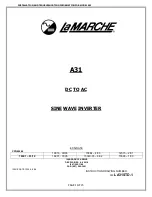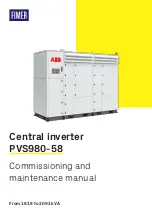
VP5000-DC/DC60, VP5000-DC/DC200-HL
Safety
Last edited 2019-02-08
by Sonja Scheunert
Filename
VP5000_DCDC60_200-HL_installation_manual_v1-4en.docx
14 / 173
Only use suitable lifting equipment that is approved for the weight (e.g. forklift trucks) and lifting
gear.
Keep people and body parts away from under the suspended load during lifting, transport, or
assembly.
Wear suitable personal protective equipment such as safety shoes.
2.6.6
Coolant
The coolant consists of a mixture of water and glycol.
Glycol is harmful to health. When handling glycol coolant, wear tight-fitting safety goggles,
chemical-resistant gloves, and long-sleeved work clothing. Observe the information on the
manufacturer’s safety data sheet.
Glycol must not enter the groundwater, water bodies, or the sewage system. It must not be
disposed of with household waste either. Dispose of glycol-containing coolant and contaminated
objects (e.g. cleaning cloths, pipes) in accordance with local regulations.
Personnel requirements
2.7
Inadequately qualified personnel are not aware of the dangers involved in handling the
VECTOPOWER and may therefore endanger themselves and others. All work must be carried out
by qualified and trained personnel.
The contents of this installation manual must be read, understood, and followed completely by all
responsible persons before they work with VECTOPOWER.
2.7.1
Qualified electrician
Tasks: Planning, connecting, commissioning, operating, maintaining, troubleshooting, and shutting
down the system.
A qualified electrician has the technical training and experience to carry out work on electrical
equipment. He or she knows all relevant standards and directives. This person can also identify
dangers early and react accordingly.
A qualified electrician also has the necessary further training to carry out work on high-voltage
systems. Depending on the requirements of the respective application, it may be necessary to be
able to work under voltage.
The additional training depends on various requirements:
- The type of application, for example, in vehicles or stationary systems.
- The location and date of application, for example, government regulations.
- Accident prevention regulations for the respective place of use.














































